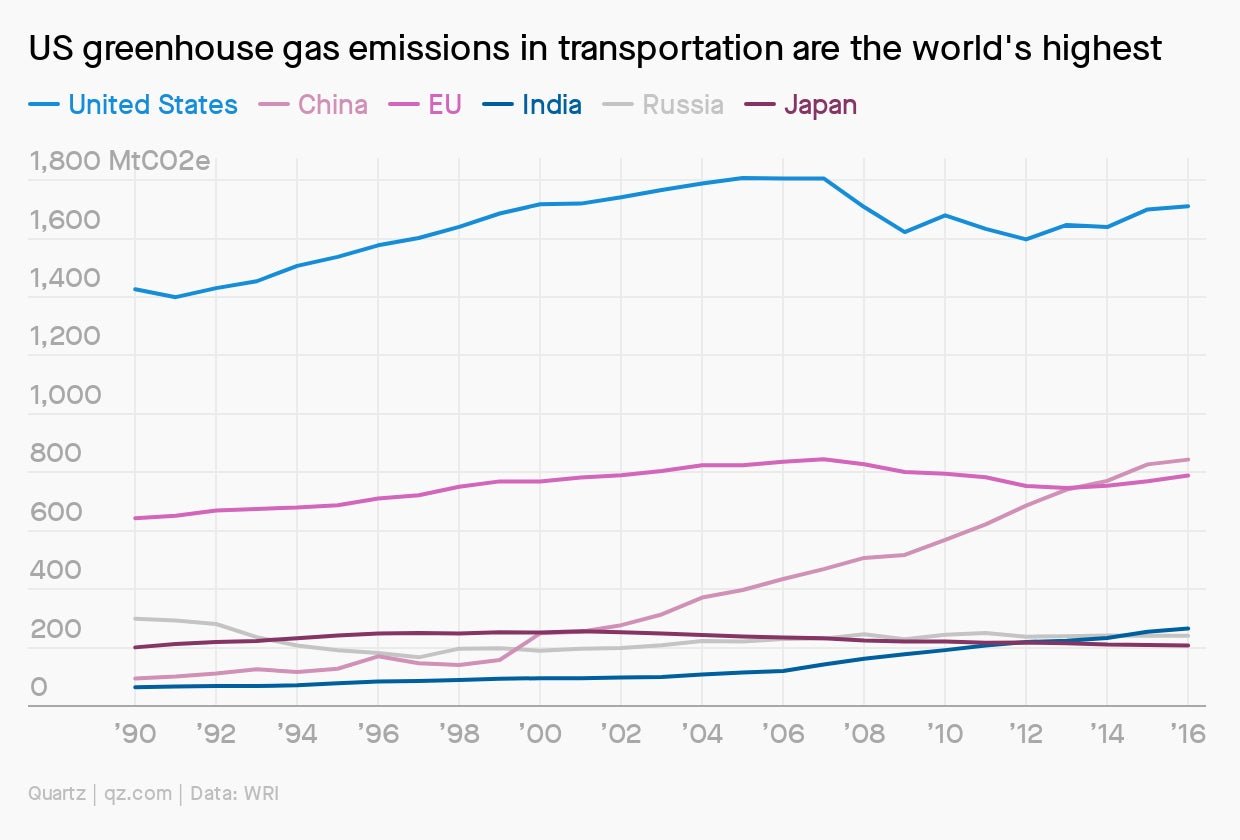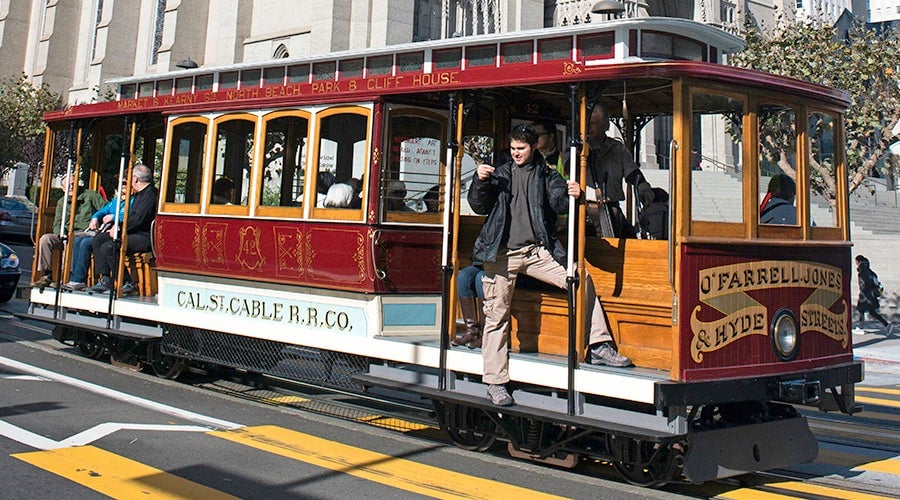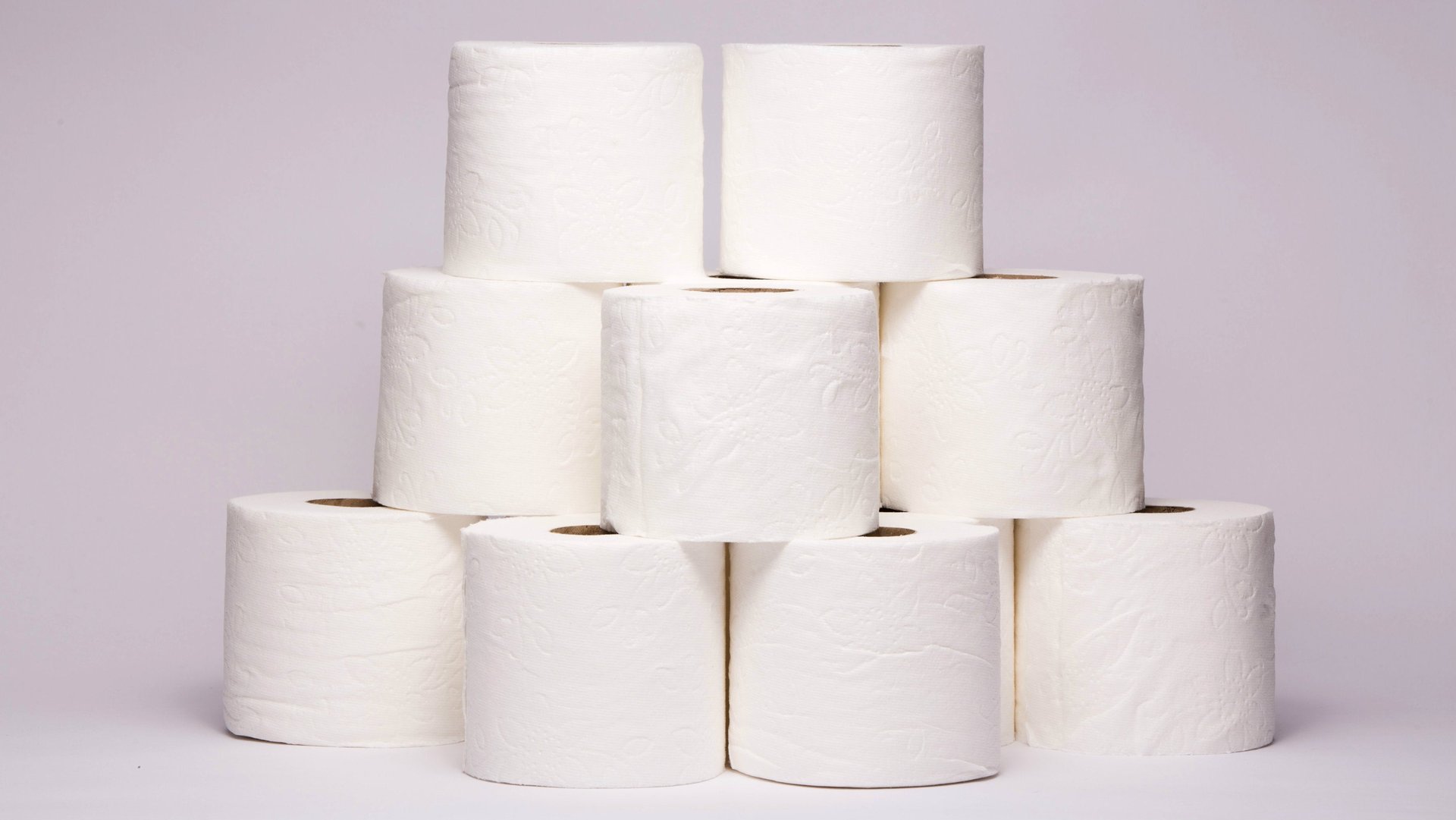The Race to Zero Emissions: The pandemic is rewriting the rules of transit
Under the cover of darkness, San Francisco’s transit workers are redesigning the city. Armed with paint cans, orange barricades, and a willingness to experiment, they’re erecting new bus stops and bike lanes. Miles of new “slow streets” limit traffic, and a few are closed entirely. Sidewalks and parking spaces are morphing into outdoor dining areas.

Under the cover of darkness, San Francisco’s transit workers are redesigning the city. Armed with paint cans, orange barricades, and a willingness to experiment, they’re erecting new bus stops and bike lanes. Miles of new “slow streets” limit traffic, and a few are closed entirely. Sidewalks and parking spaces are morphing into outdoor dining areas.
Experiments in “tactical urbanism” are now transforming cities around the world. “Almost every transit agency is fast-tracking something and making a ton of changes right now,” says Tiffany Chu, founder of Remix, an urban mobility planning startup working with 325 cities.
Little of this would have been possible a few months ago. With trains and buses idled, and highways emptied during coronavirus lockdowns, cities are trying out fast, lightweight solutions to their transportation woes.
It’s a singular opportunity to redesign transit systems around people, rather than cars—one I explore in our field guide to the commuting revolution (available for Quartz members ✦).
In the US, 70% of transportation funding has supported highways while only 20% backed transit. Almost nothing was allocated for walking and biking. That’s led to a traffic dystopia with some of the highest emissions in the world—nearly double per capita transportation emissions in the EU and 10 times higher than China.

The pandemic has exposed the inequities baked into that system. Historically, US officials have treated white-collar commuters, and their cars, as their primary customers. Yet skyscrapers now sit virtually empty while lower-income neighborhoods remain busy with daily transit riders. “Covid has revealed the geography of our essential workers,” says San Francisco’s transit agency director Jeffrey Tumlin.
In response, the California city is fast-tracking buses from outer neighborhoods, while halting some direct light-rail routes in inner neighborhoods. Similar approaches are being adopted around the world, weaving together transit and micro-mobility to funnel people through central routes and deprioritize private cars. Transportation systems could become more equitable and less polluting—faster than expected pre-pandemic.
✦ You can read more about San Francisco’s charge to dethrone cars by signing up for a free 7-day trial. ✦
We’re experimenting with a new format this week. We’ll lead with a deeper dive on one issue, and give you the most important summaries from the week. If you have any suggestions about how we can make R20 better for you, please write!

Here’s what happened over the past week that helped or harmed the world’s chances of cutting greenhouse-gas emissions to zero:
Decreases emissions
1️⃣ The day after his party lost heavily to Greens in a round of municipal elections, French president Emmanuel Macron promised €15 billion in new funding for climate initiatives.
2️⃣ Chesapeake Energy, one of the major pioneers of fracking, filed for bankruptcy after losing more than $8 billion in the first quarter of this year. At least 20 other US oil and gas companies have filed for bankruptcy because of the pandemic-related oil crash.
3️⃣ California’s biggest electric utility agreed to support a state plan that will require new buildings to be all-electric, avoiding natural gas.
Net-zero (for now)
1️⃣ Cabinet-level representatives from the US, EU, China, India and elsewhere will meet online next week for a summit hosted by the International Energy Agency on how to implement a low-carbon coronavirus recovery.
2️⃣ Democrats in the US House of Representatives will announce a sweeping clean energy policy that includes funding to make US vehicles “clean” by 2035. An infrastructure bill introduced last week would fund a step toward that goal: Electrifying USPS mail trucks.
3️⃣ One potential stumbling block: A former Tesla supply chain executive is warning that makers of electric vehicle batteries are about to face a shortage of lithium—not because it’s rare, but because only a few small companies are equipped to process it.

🔼 Increases emissions
1️⃣ To help US businesses weather the coronavirus downturn, the Federal Reserve is buying up tens of millions of dollars worth of bonds. One-fifth of that spending—around $37 million—is on ailing energy and utility companies.
2️⃣ Local governments in China are accelerating their construction of coal-fired power plants as part of pandemic recovery. Some analysts worry that impulse will extend to Central Asia and Africa, where China is the top investor in mines and power projects.
3️⃣ Toilet paper and tissues are major drivers of deforestation in Canada’s boreal forest, according to a new report. Some major TP brands source 100% of their pulp from old-growth forests, rather than recycled sources.
Additional reporting by Tim McDonnell.
Stats to remember
As of June 28, the concentration of carbon dioxide in the atmosphere was 415.57 ppm. A year ago, the level was 413.05 ppm.
Have a great week ahead. Please send feedback and tips to [email protected] and [email protected].